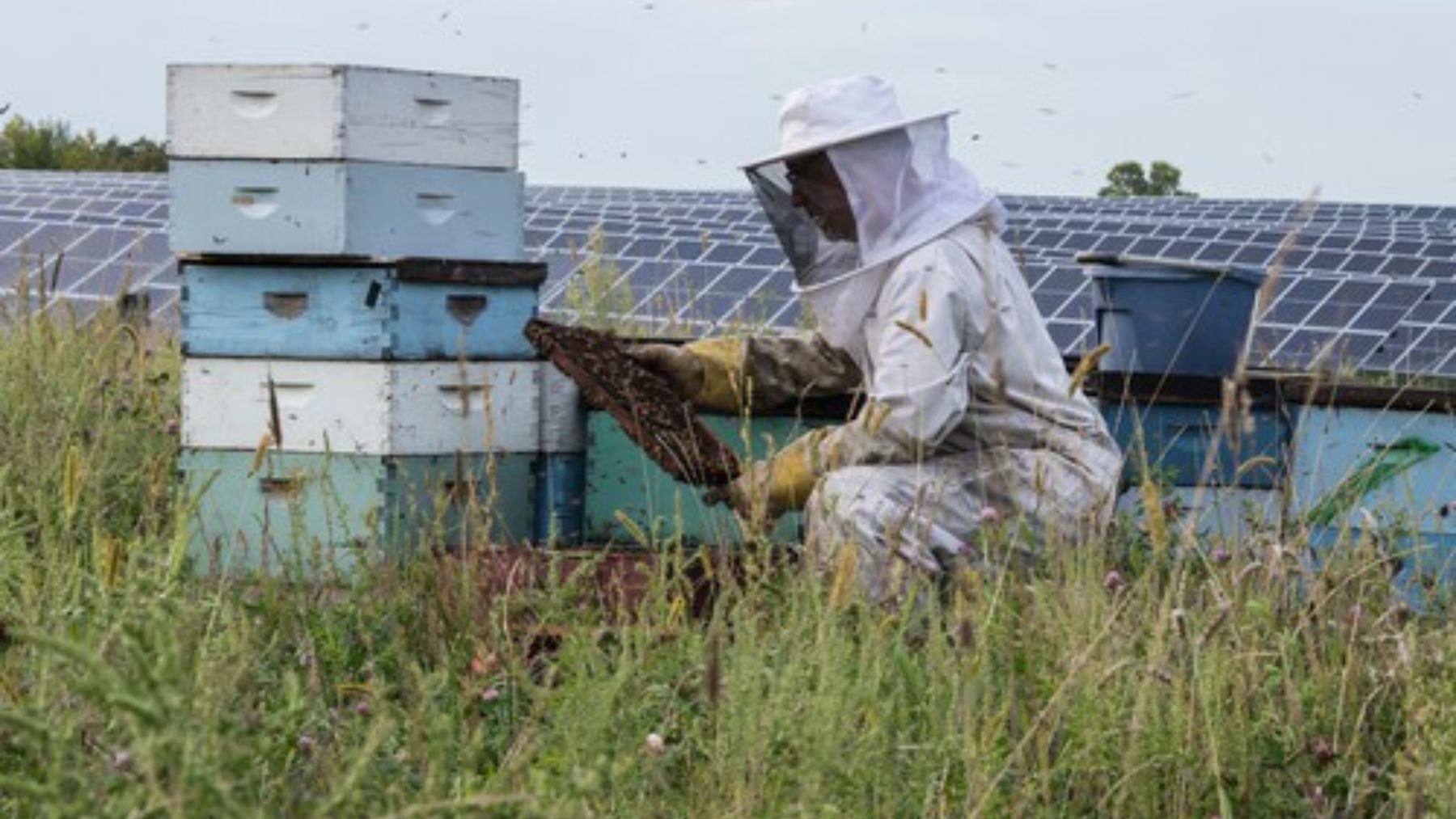Bees play a fundamental role in the proper functioning of nature solar panels. The end of the solar panels It seemed to be approaching the arrival of the sphere that concentrates even the light of the moon, but they are more active than ever and with a more than favorable forecast, especially in the countryside. The agrivoltaica It emerged in the 1980s, but its large-scale implementation had not happened until now thanks to advancing technology and falling costs.
Its benefits go beyond using the land to produce electricity. The solar panels They create shaded spaces that reduce risky water evaporation and protect crops from heat waves. They are also efficient tools for repopulating the bee field. The global disappearance of various animal and insect species as a result of industrialized agriculture and the intensive use of pesticides threatens biodiversity and food supplies.
The situation is especially serious for bees, the insects that pollinate the plants that humans eat or use to feed livestock. Their populations are vital for the pollination of 75% of crops.
What place do bees occupy in solar panels?
In this context Minnesota installed solar panels in two gigantic crops. 5 years later they have become a paradise for bees. The agrivoltaic systems They created pesticide-free areas that repopulated the bee fields. With this energy solution Minnesota has shown that agricultural voltaic projects can protect bee populations and exponentially increase the diversity of insects and flowers.
It should be noted that these projects concern agricultural or livestock land solar panels that produce energy. To verify the scope of these types of initiatives, a five-year study was conducted focusing on two large solar installations in the south of the state. The results obtained are especially promising for insects, registering benefits beyond the development of new habitats for them.

The study of Argonne National Laboratory determined that the agrivoltaica maximizes land use by alternating agricultural production with energy generation and develops new shaded, pesticide-free habitats for insects. These spaces below solar panels They multiply healthy populations of bees and other insects that are optimal for crops. A context that allows an improvement in agricultural productivity through an increase in pollination and natural pest control.
The study of Minnesota revealed that the fields adjacent to the agrivoltaic They also benefit from the visits of more bees. The increase in pollination can be compared to that in protected areas of the U.S. Department of Agriculture Conservation Reserve Programthat pays farmers to withdraw production from some countries to achieve the restoration of insects’ natural habitats.
Solar panels and bees: a ‘team’ that saves humanity
The agrivoltaica It was not created to restore natural habitats, but that does not alter the fact that it is the perfect complement to achieve this or partially replace the direct conversion of land with a purely economic incentive. By using this method of energy generation, farmers continue to cultivate the soil and generate additional income from energy production.
In this way the “team” work of the bees and the solar panels They could save humanity. A phenomenon so shocking that Endesa has already implemented agrivoltaic energy in its renewable power stations in Andalusia.

